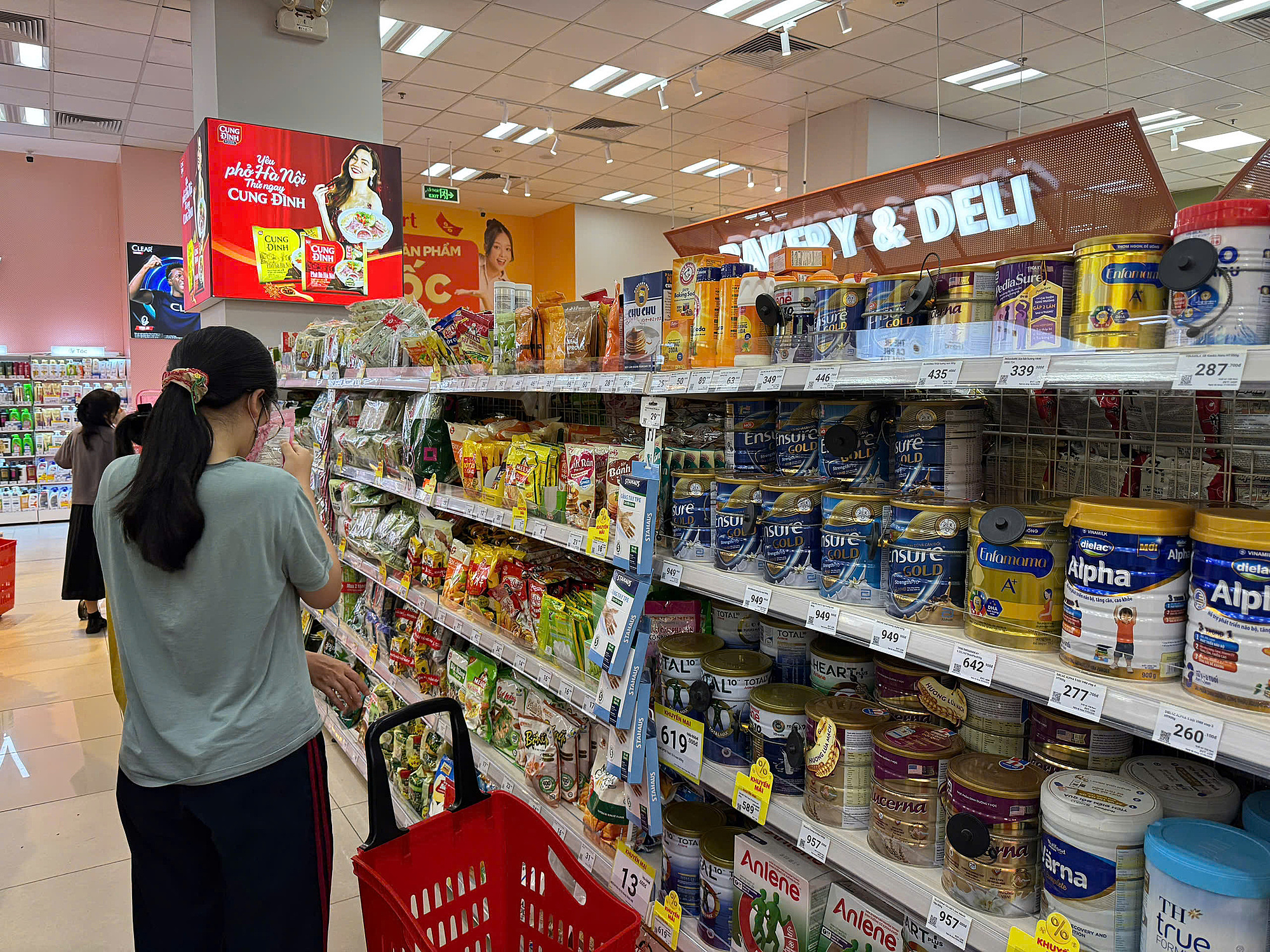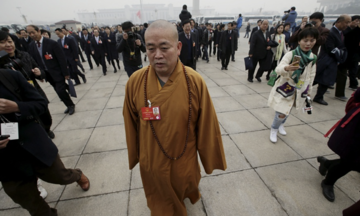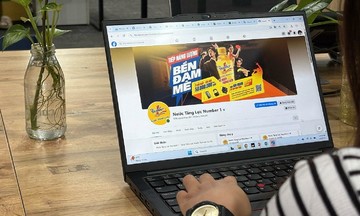In early April, the 60-year-old woman in Hanoi went to see a doctor because her joint pain did not subside despite taking 5 to 6 types of supplements daily.
Thuy was shocked to receive a diagnosis of osteoarthritis, osteoporosis, and a herniated disc. The doctor said one of the products she was using contained corticosteroids, a potent anti-inflammatory and pain reliever that can cause osteoporosis and adrenal insufficiency as side effects.
Back home, she asked her children to check and discovered that many products she was using were on the list of counterfeit goods recently recalled by authorities. "I thought expensive medicine was good, but it turns out I bought all counterfeit goods," she said.
A month later, she discovered that the milk advertised as "anti-osteoporosis" was part of a large-scale counterfeit milk production ring. "At this point, I suspect everything I've bought for the past 5 years is fake," the 60-year-old woman said.
 |
Some bottles of supplements and medicine Hong Thuy is using, many of which are on the list of counterfeit goods. Photo provided by the subject |
Some bottles of supplements and medicine Hong Thuy is using, many of which are on the list of counterfeit goods. Photo provided by the subject
Taking her child back to her parents' home in Nghe An for summer vacation, Thanh Truc, 29, from Binh Tan District, Ho Chi Minh City, realized her hometown "is being besieged by counterfeit goods." The toothpaste her family was using was lumpy and had a bland taste. The shampoo and shower gel of famous brands did not lather and caused itching. The MSG granules were uneven and cloudy white.
Upon closer inspection, Truc realized the fish sauce bottle labeled like the Nam Ngu brand was actually "Nam Ngu," and the shampoo was "Clean" instead of "Clear"—subtle changes that people in her hometown would hardly notice.
"These products may not cause immediate harm, but in the long run, I dare not think about the consequences," Truc said.
Many people are now experiencing the same confusion as Thanh Truc and Hong Thuy, especially as large-scale counterfeit production and trading rings have been continuously uncovered recently.
Since April, authorities have busted several major cases, such as the production of 10 tons of counterfeit medicine in Thanh Hoa; a warehouse of counterfeit electronics worth 22 billion VND in Hanoi; and a production line of 573 counterfeit milk powder brands with nearly 500 billion VND in revenue. Recently, on 7/6, a counterfeit oil production ring for Castrol, Motul, and Honda was busted in Ho Chi Minh City. Two days later, a business in Phu Yen was accused of releasing 17 tons of counterfeit coffee into the market.
In Quarter 1 of 2025 alone, market management forces inspected 6,192 cases, detecting and handling more than 5,600 violations of counterfeit, smuggled, and substandard goods.
Vu Van Trung, Vice President of the Vietnam Consumer Protection Association, said digital platforms are fertile ground for counterfeit goods. "The perpetrators' tactics are becoming increasingly sophisticated, exploiting loopholes in e-commerce management, especially through livestream sales on social media," Trung said. These channels are easy to set up, difficult to control, and easy to erase traces after transactions.
On the other hand, huge profits are the main driver. Nguyen Truong Son, Chairman of the Vietnam Advertising Association, said profits from livestream sales sessions mixing real and fake goods can reach billions of dong, while the fines are only 20-80 million VND, not enough of a deterrent.
A 2021 survey by the General Department of Market Management showed that up to 80% of consumers knowingly buy counterfeit goods because of low prices or a desire for brand names.
 |
A customer carefully checks the information on the product packaging before buying at a supermarket in Thanh Xuan district, Hanoi, on the evening of 9/6. Photo: Nga Thanh |
A customer carefully checks the information on the product packaging before buying at a supermarket in Thanh Xuan district, Hanoi, on the evening of 9/6. Photo: Nga Thanh
Also due to the desire for brand names and online shopping, in April, Hai Long, 45, from Hai Phong, had to be hospitalized for an epileptic seizure. The seizure occurred after he took the fifth pill from a box of "imported from South Korea" anti-stroke medicine, costing one million VND for 10 pills. Only when he was hospitalized did he stop using it at the doctor's request. Exactly one month later, the product was announced as counterfeit, shocking the whole family.
After her husband's incident, Minh Ha, Long's wife, refused all offers of foreign medicine and supplements. For daily meals, she returned to using self-fried lard, ordered rice and fish sauce from her hometown, and converted the rooftop into a vegetable garden. Her supermarket trips now take 3 to 4 times longer, as she carefully reads the ingredients and scans the barcodes of each product.
Living amidst a maze of real and fake, from vegetables and fish sauce to pills, nothing can be distinguished. Now I have to save my family myself," Ha said.
Since discovering she was using all counterfeit goods, Hong Thuy threw away all the supplements and milk she was using, gritting her teeth to endure the daily aches and pains. When the pain became unbearable, she asked to be hospitalized and took medicine as prescribed by the doctor.
Meanwhile, her daughter, Do Quyen, chose to confront the issue. The 25-year-old spends time researching information, looking up QR codes, and watching videos from manufacturers on how to distinguish between real and fake products before buying and instructing her relatives.
This need for self-protection has created a new trend on social media. Posts and videos guiding how to distinguish between real and fake goods through QR codes, packaging, or product structure from manufacturers attract tens of thousands of interactions. For example, a post guiding how to distinguish between real and fake dipping salt attracted nearly 100,000 likes and thousands of comments, helping many people realize they were using counterfeit products.
Given this situation, experts recommend that consumers be more proactive. Assoc. Prof. Dr. Nguyen Duy Thinh, former lecturer at Hanoi University of Science and Technology, advises people to prioritize buying goods at reputable stores, supermarkets, and large pharmacies. "Be wary of unusually cheap products and don't readily believe in unscientific tips for distinguishing between real and fake goods circulating online," Thinh said.
Vu Van Trung also calls on people to stop using and immediately report suspected counterfeit products to the authorities via hotlines or the General Department of Market Management's application.
"The actions of each individual not only protect themselves but also contribute to protecting the entire community," Trung emphasized.
Nga Thanh - Quynh Nguyen












